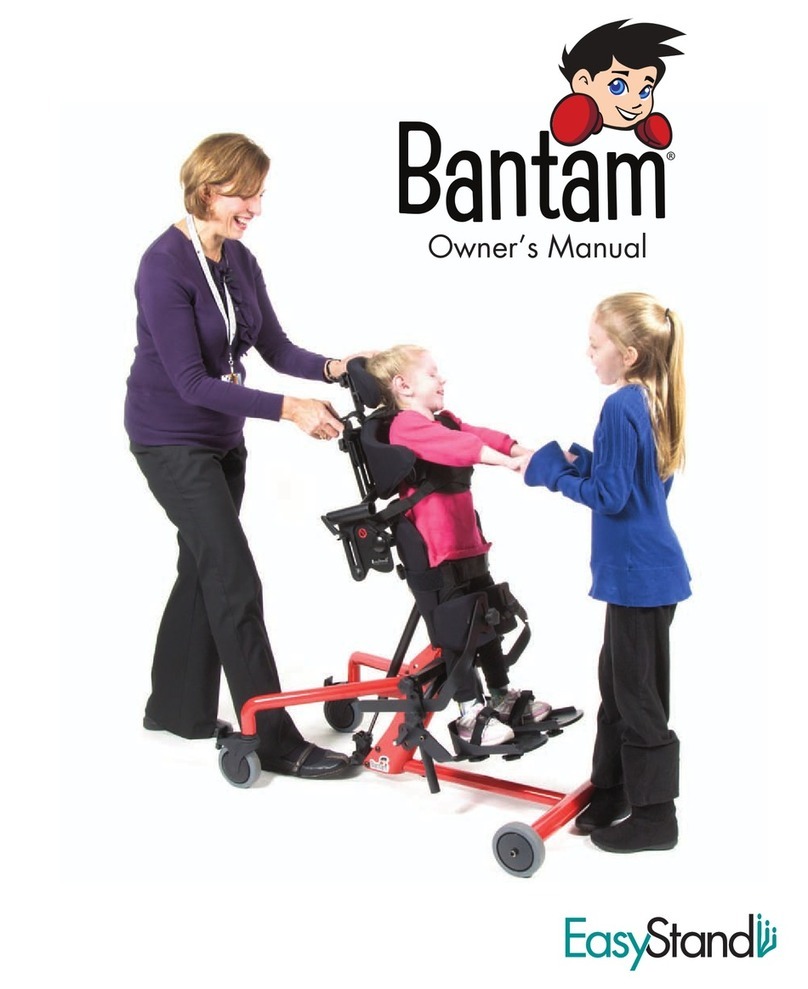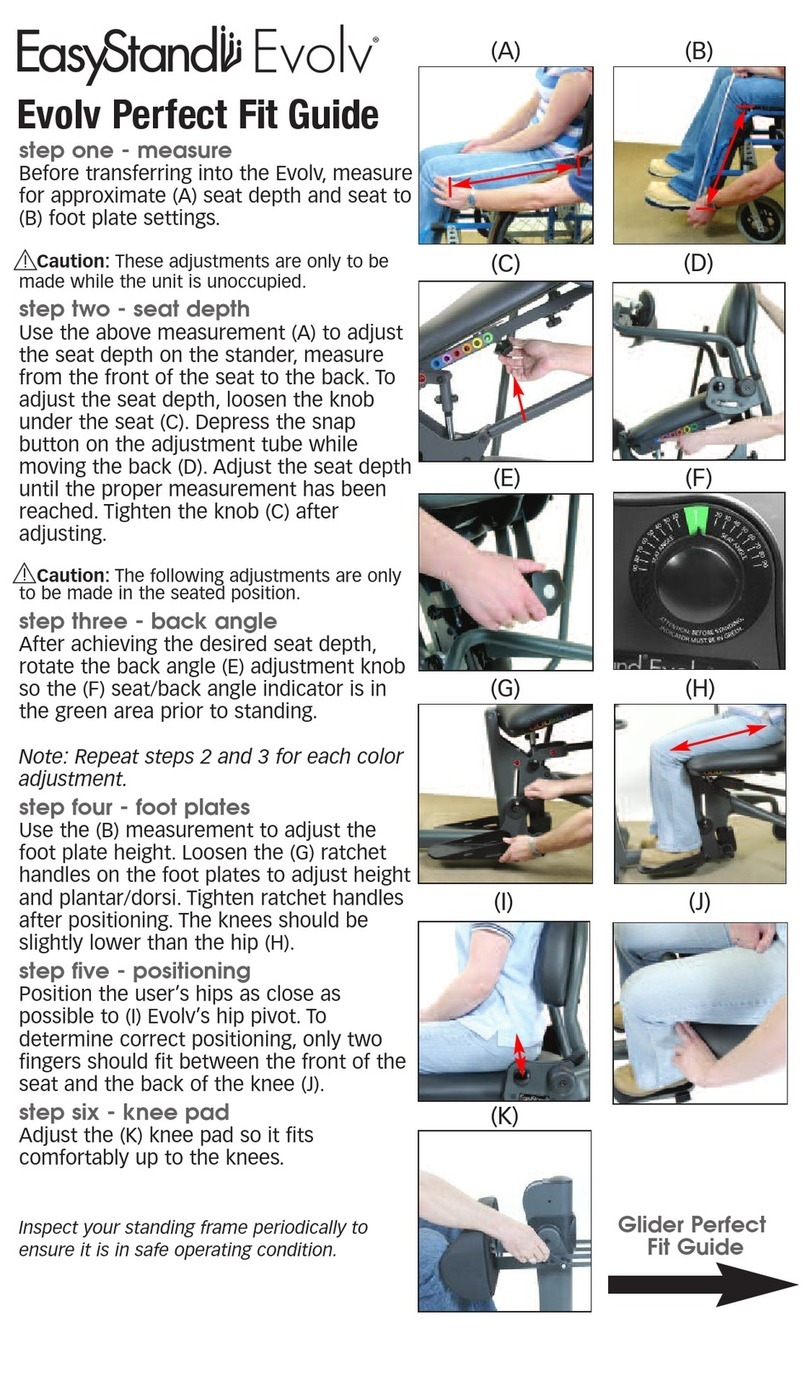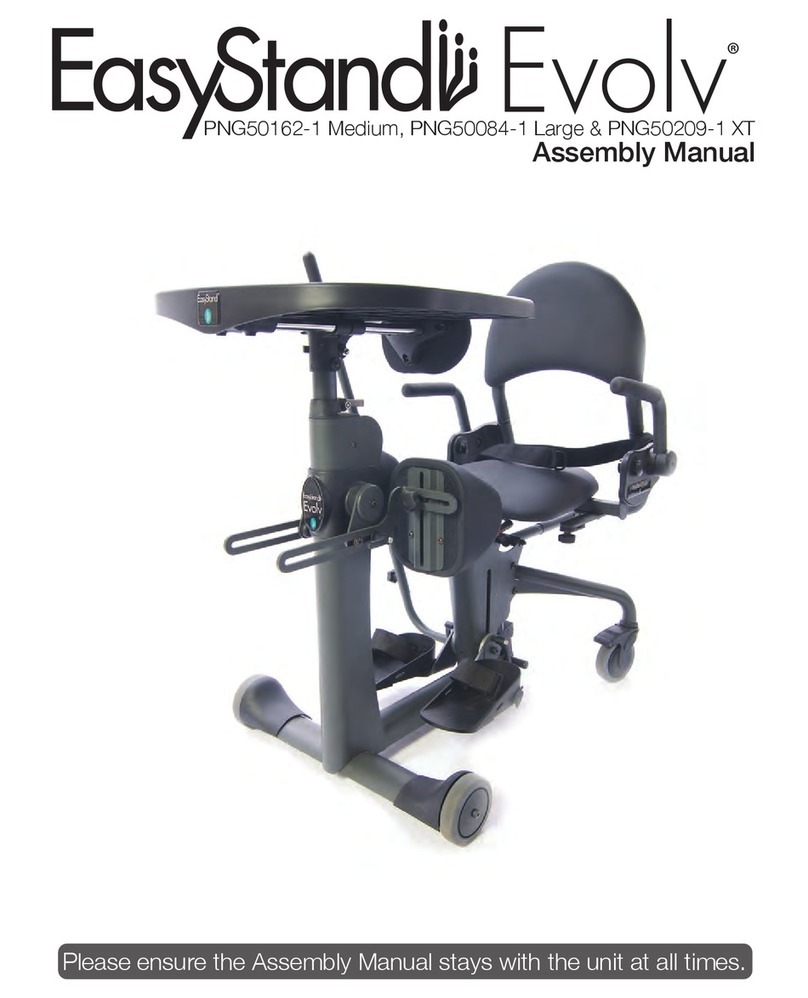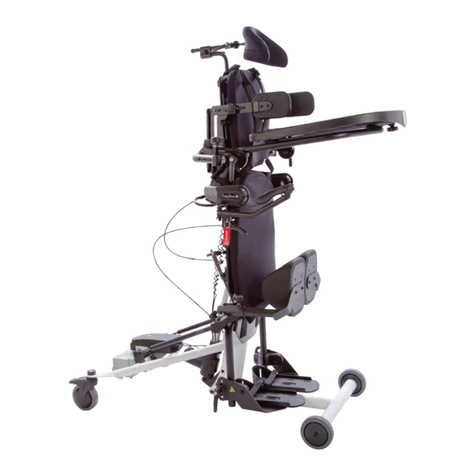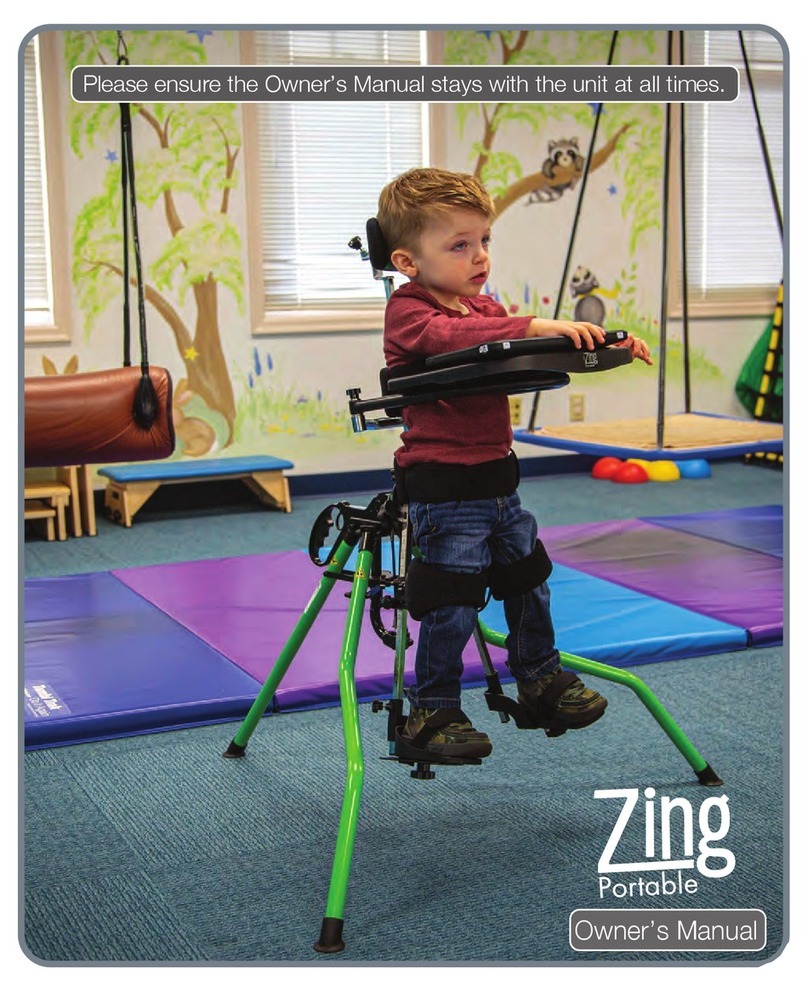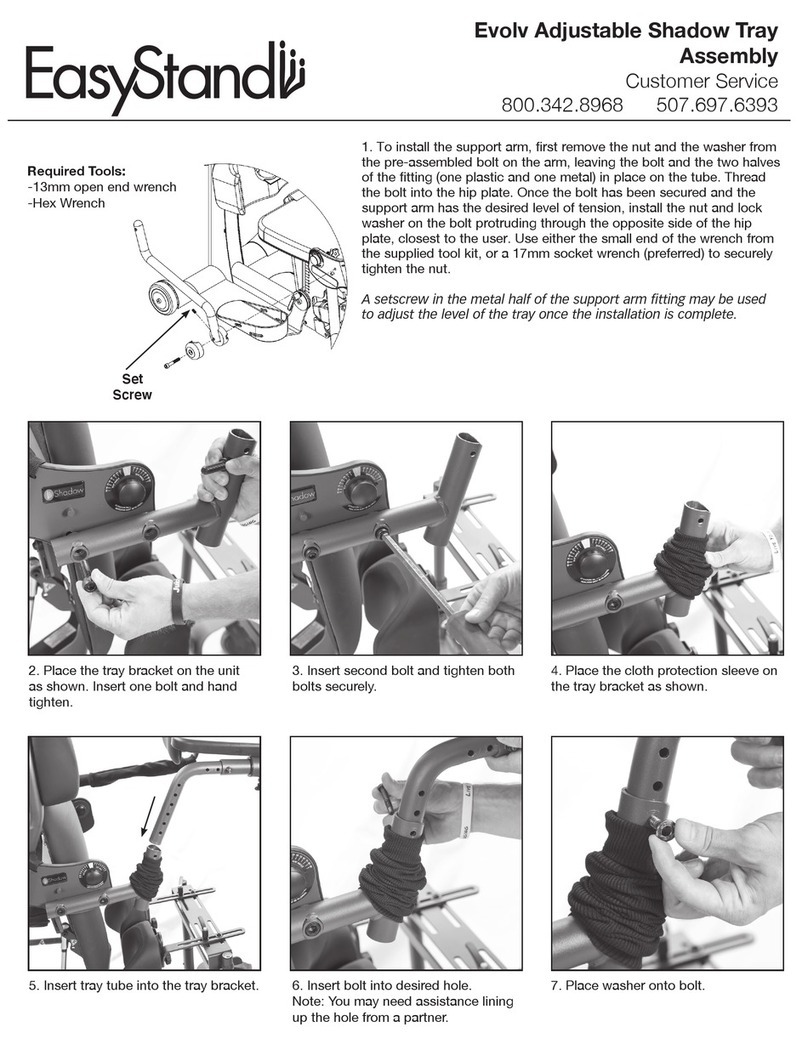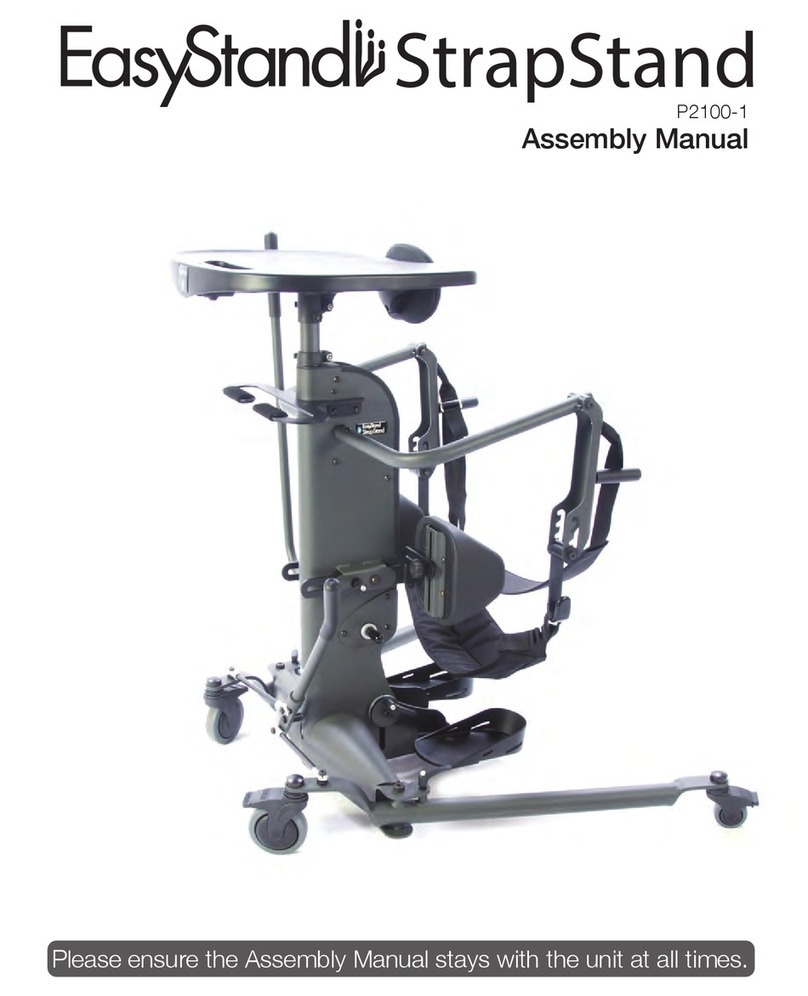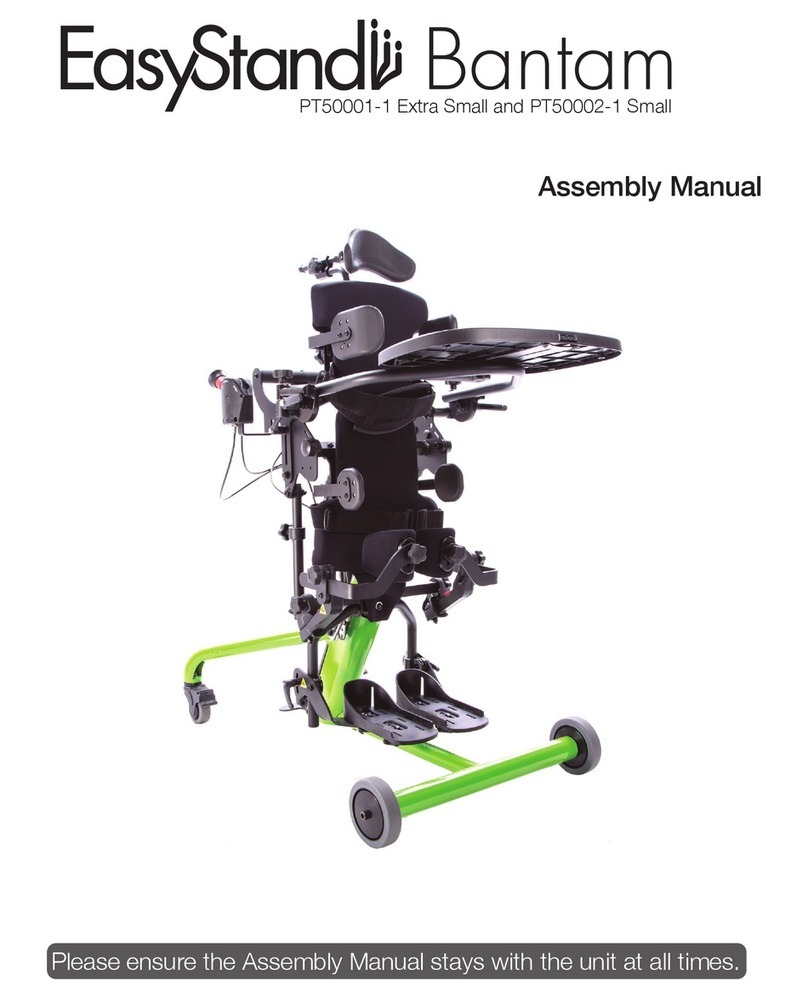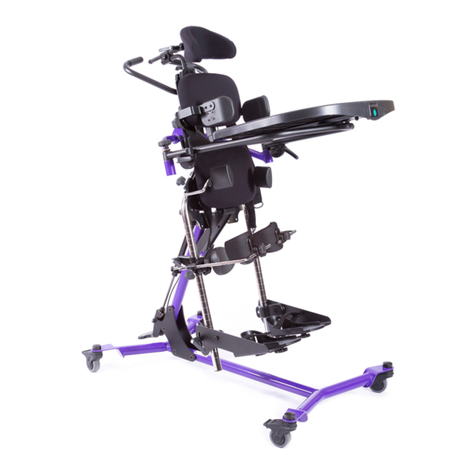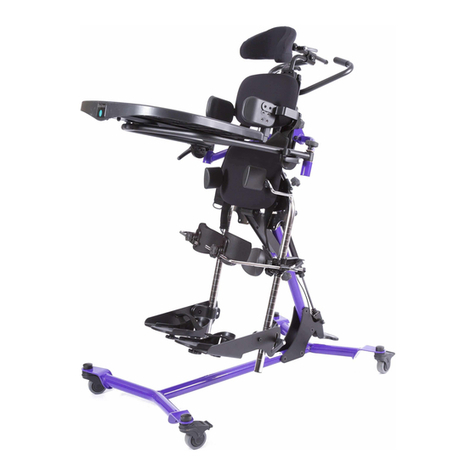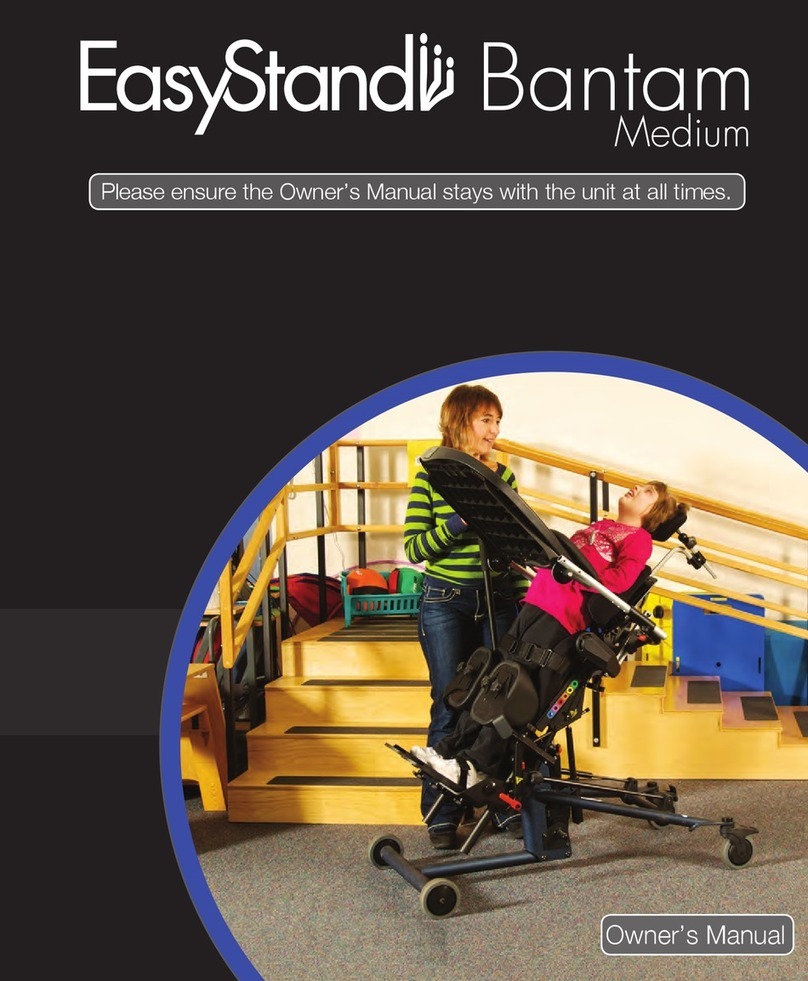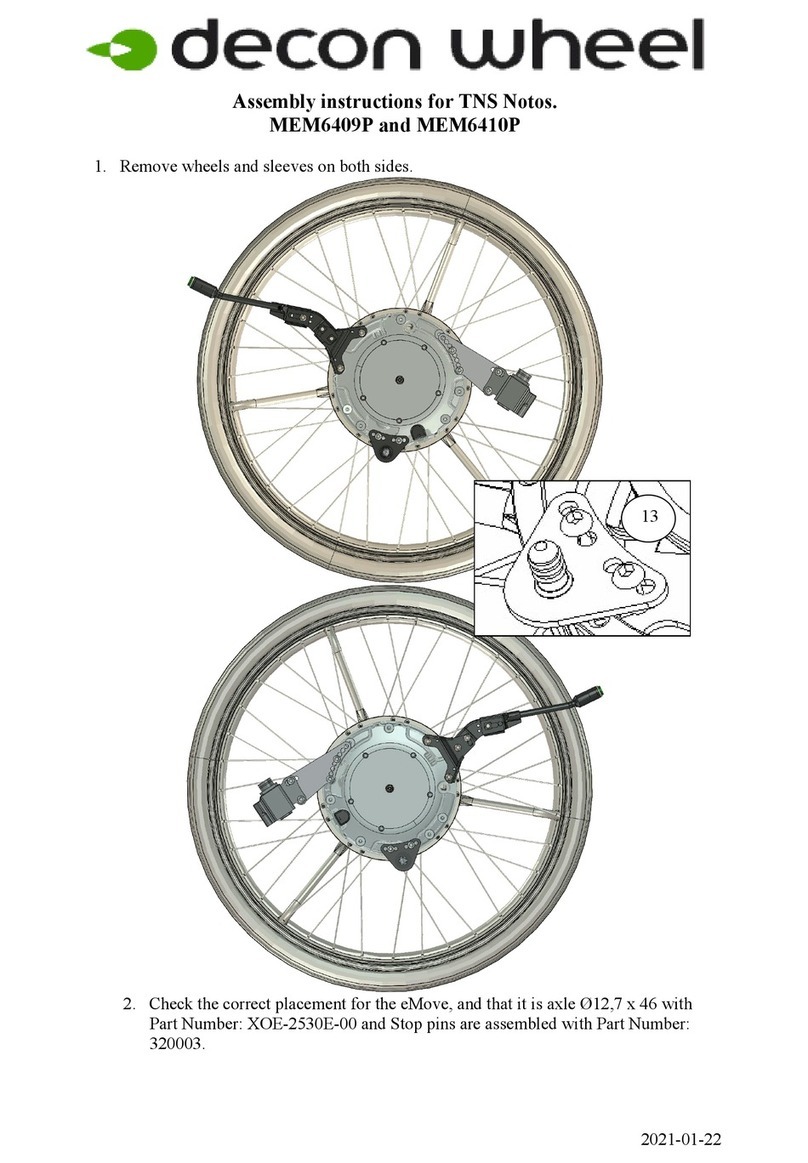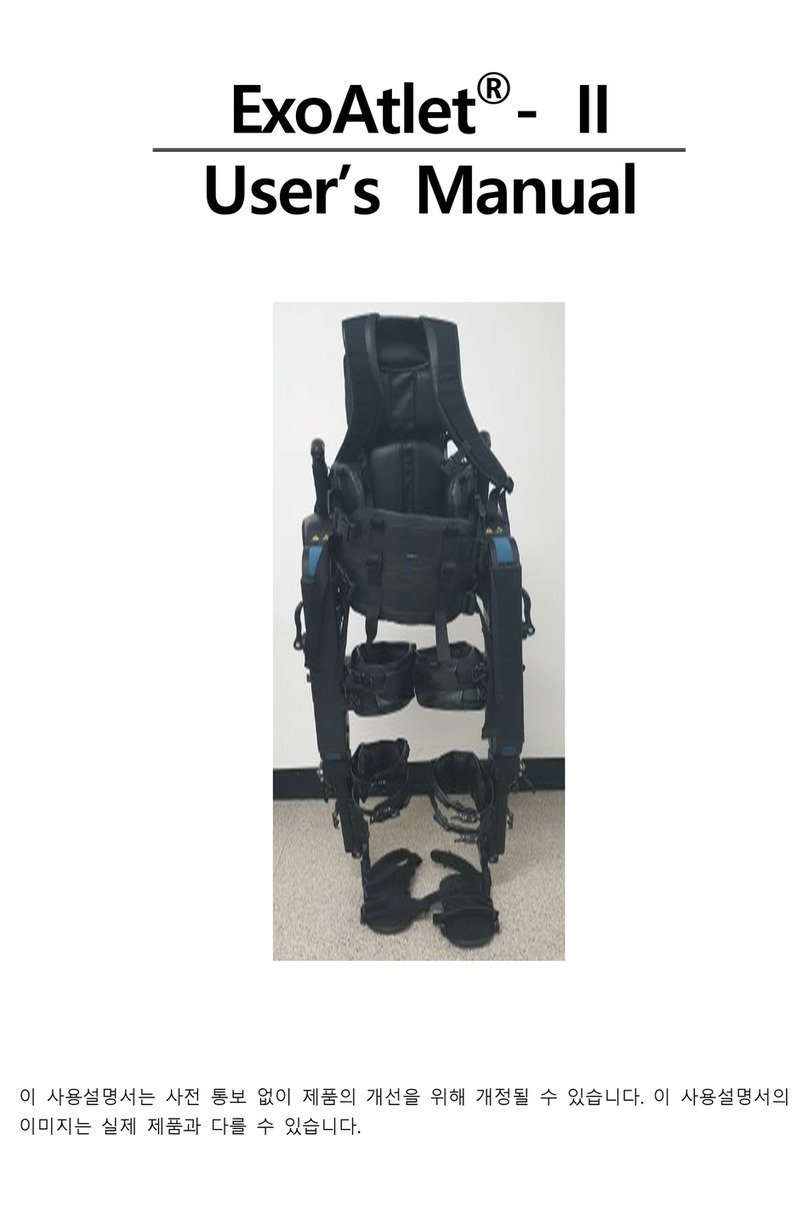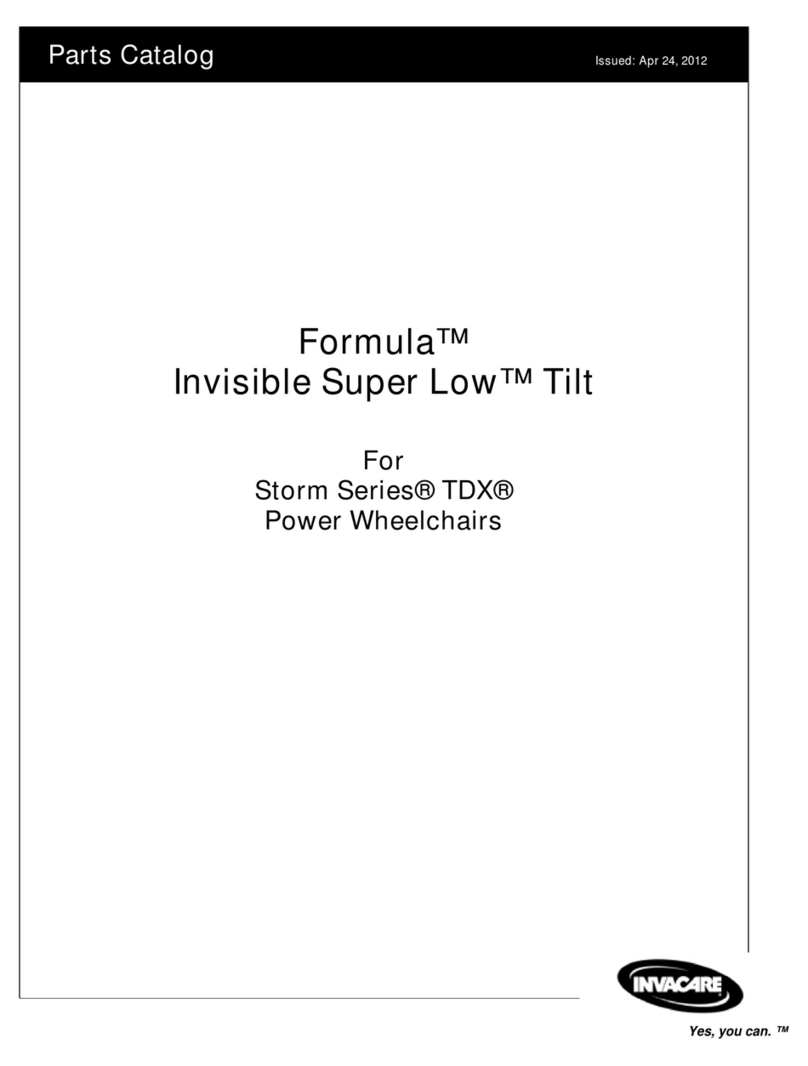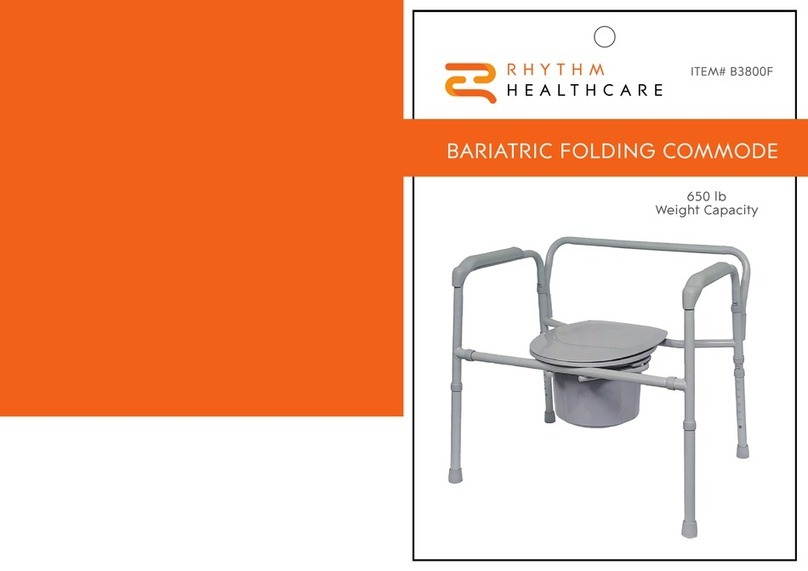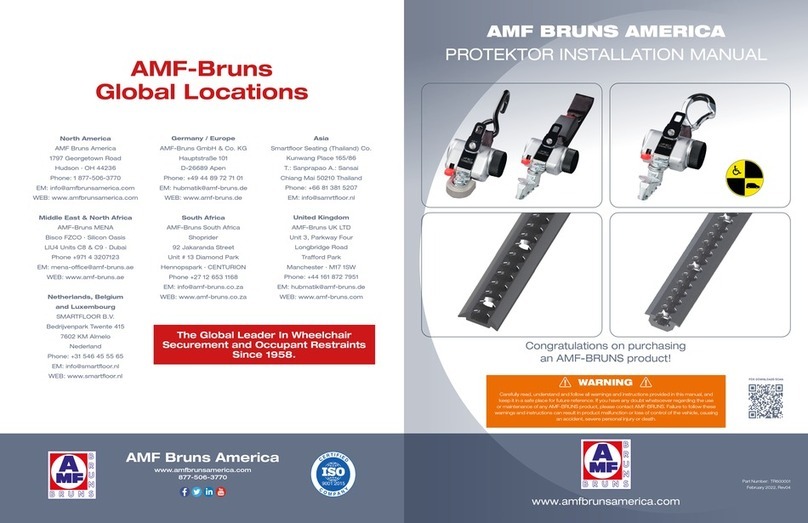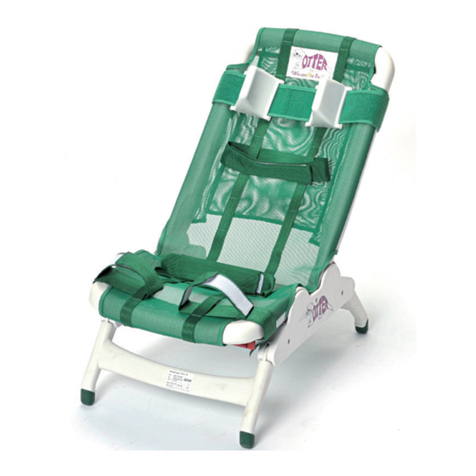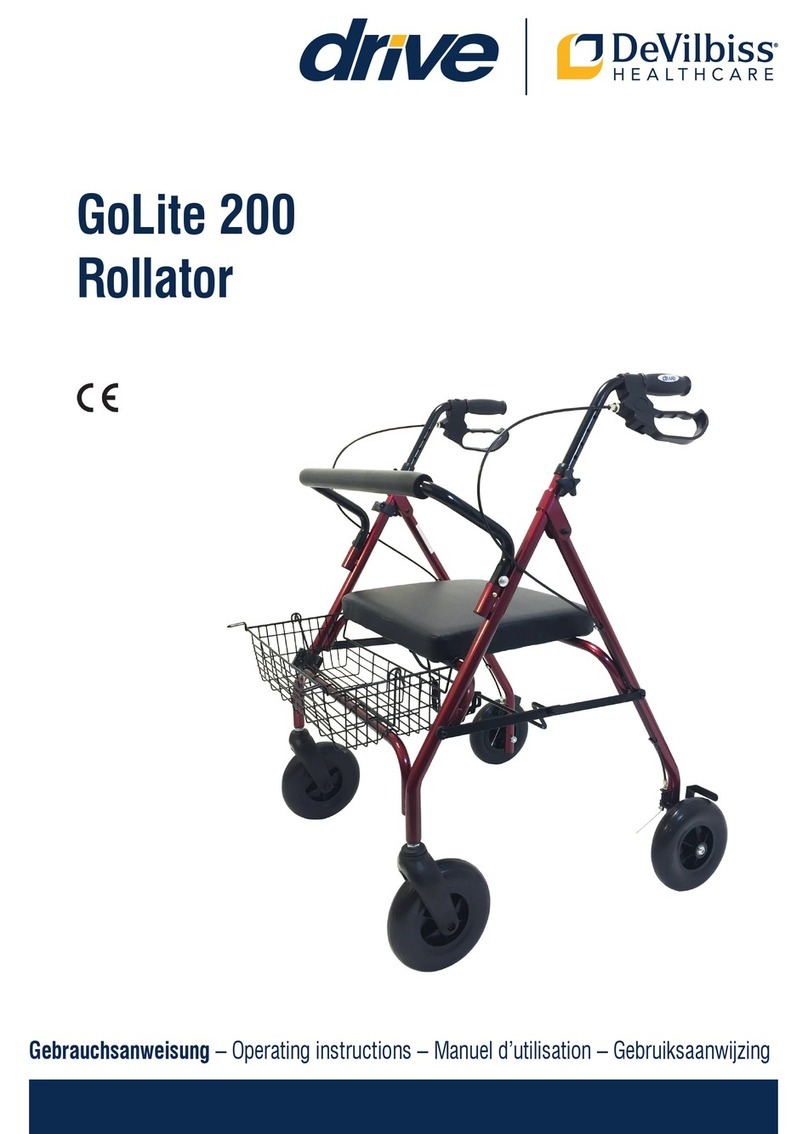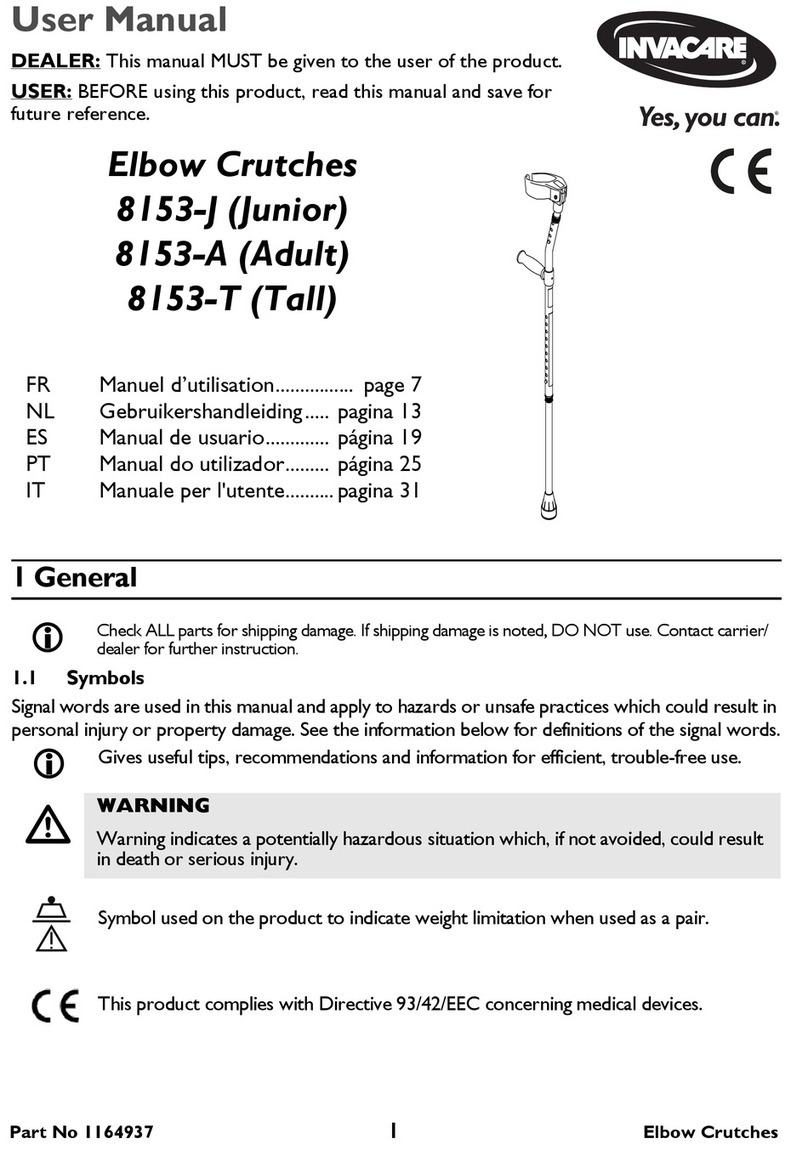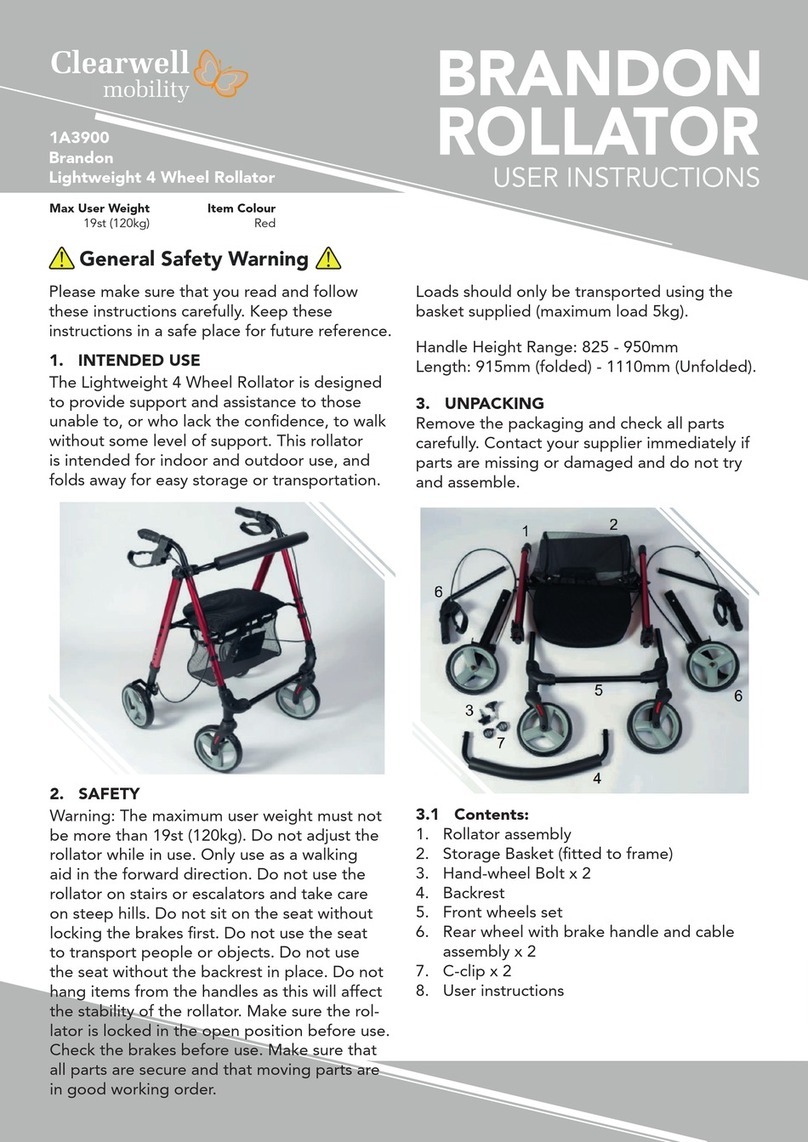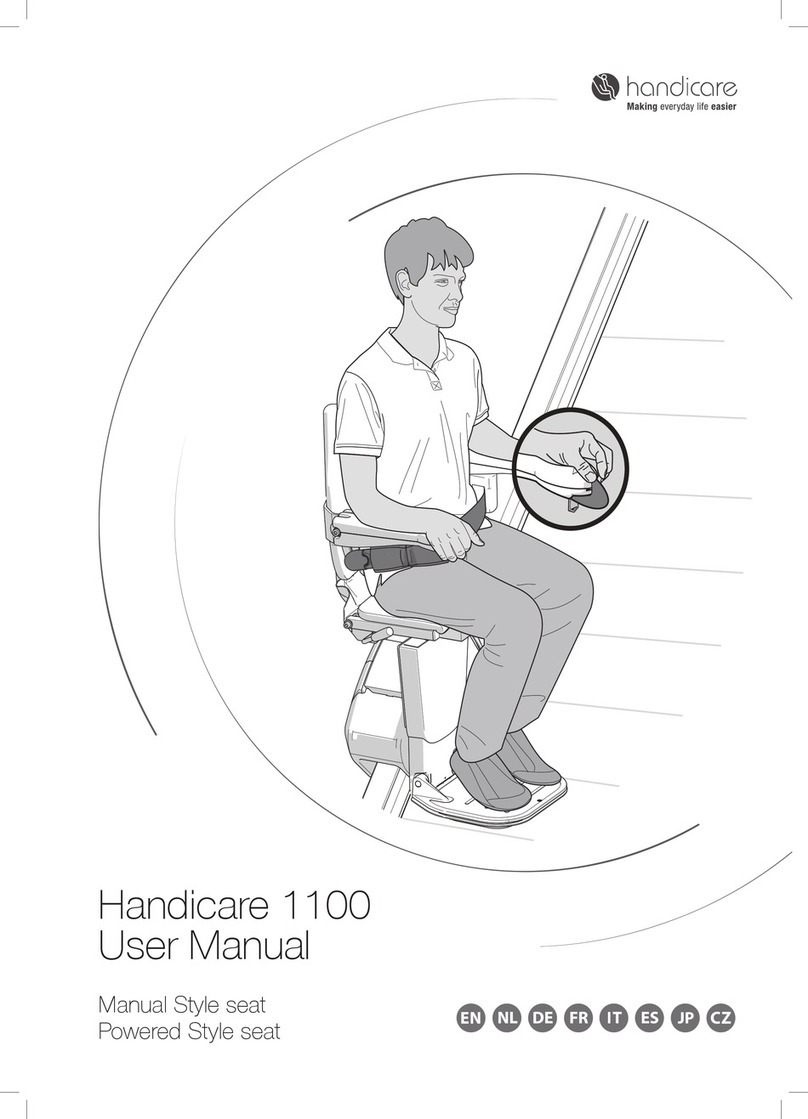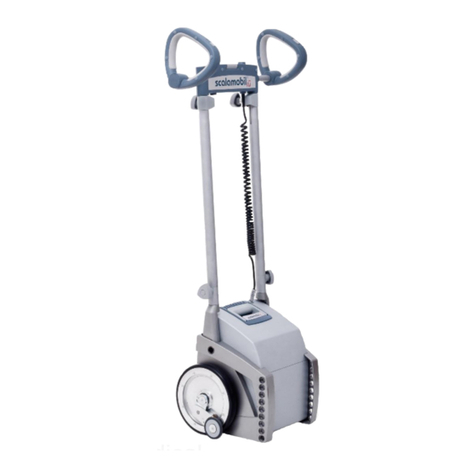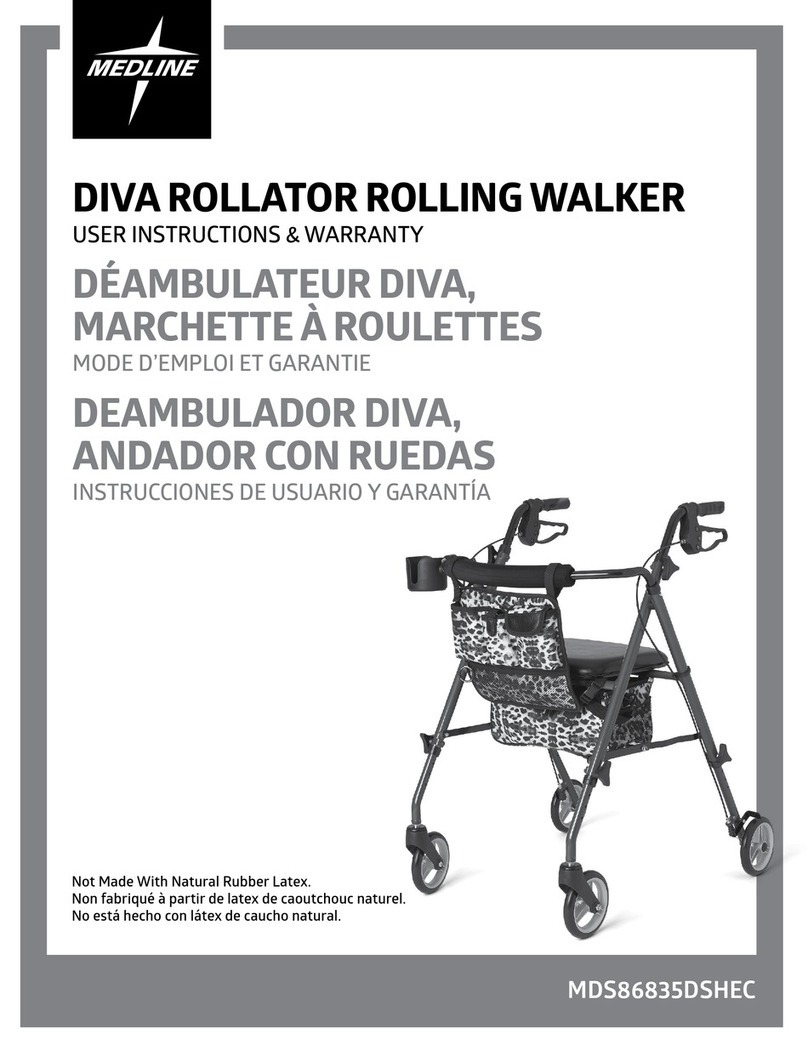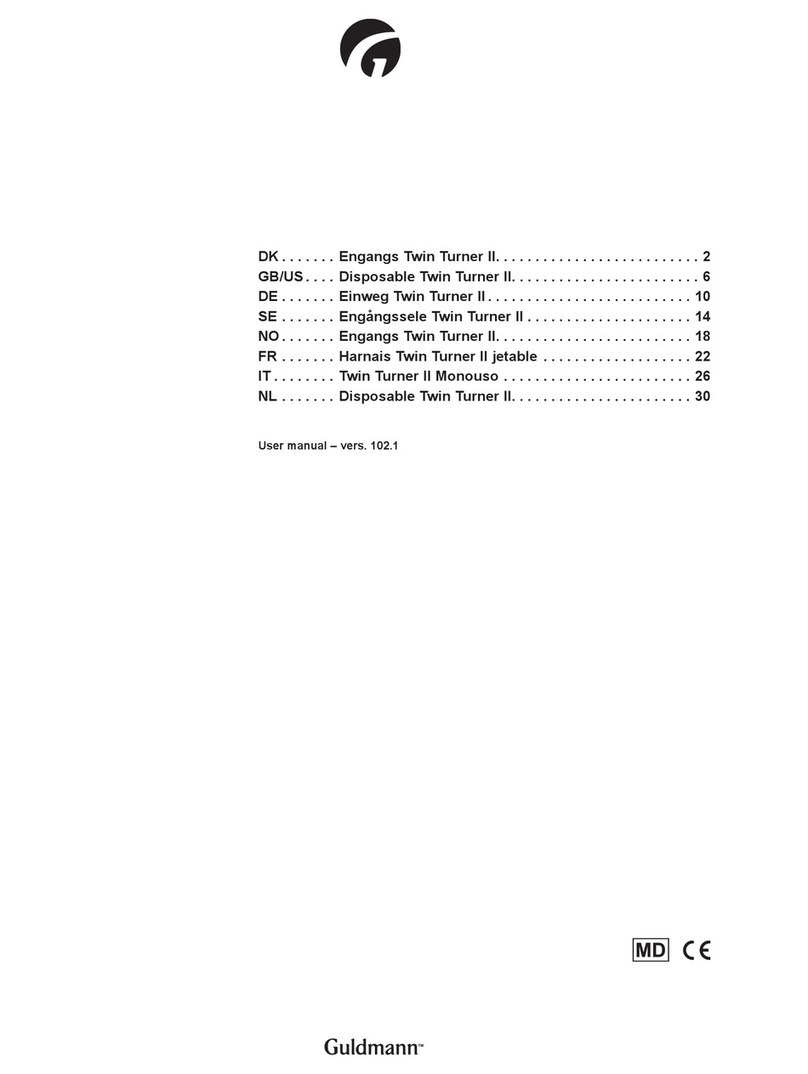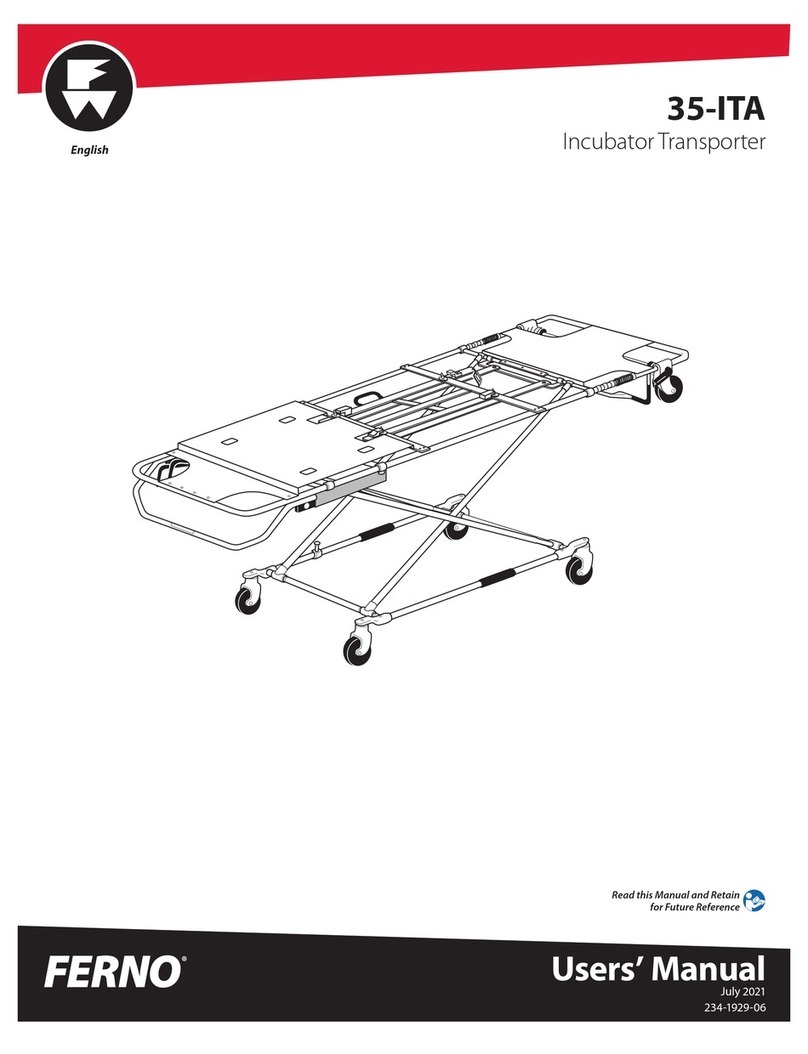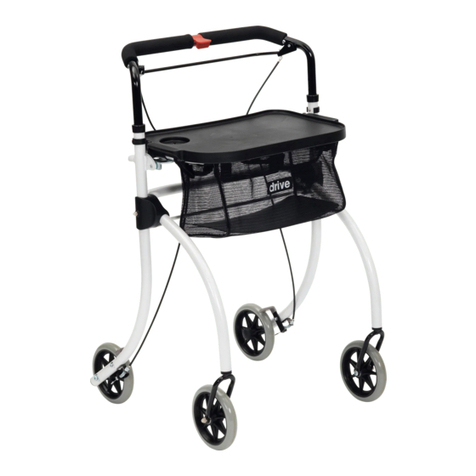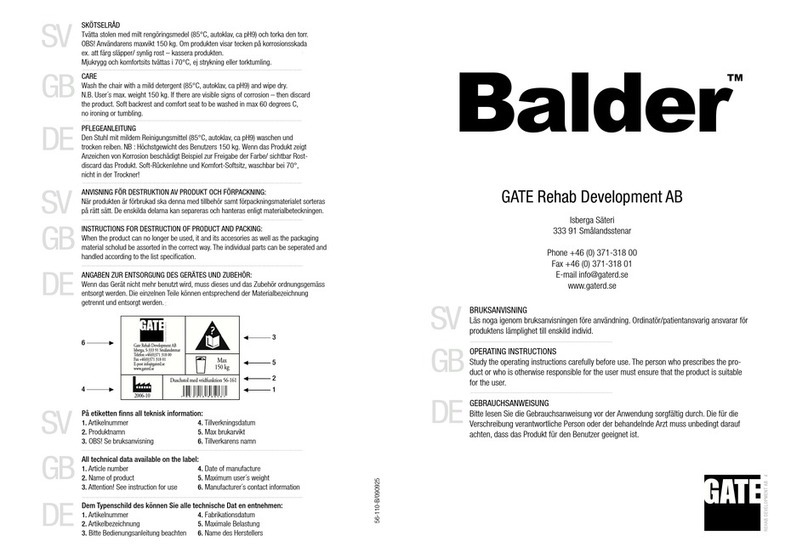
Supine Mode
Rotating the shift knob to Supine position locks
the footrest assembly, seat, and backrest to
each other, and will maintain that relationship
throughout the possible range of elevation. The
now-locked platform may be raised and lowered
as necessary by means of the hydraulic pump or
Pow’r Up option, however equipped.
While accommodating the patient in the Supine
mode in less than a fully extended position, it
must be noted that the overall range of elevation
will be decreased by the inverse amount. That is to say, the footrest carrier will
never be allowed to move rearward PAST perpendicular to the floor. For Example -
If the Supine mode is locked at a position in which the tibia is flexed 20 degrees to
the femur, the locked supine platform may not be elevated past a point in which the seat is 20 degrees less
than vertical and the footrest carrier perpendicular to the floor. Damage to the unit may result if you attempt
to exceed these mechanical limits.
Caution: The locking mechanisms used in the supine option have very high holding power. By familiarity
of the feel of the hydraulic pump or the sound of the electric actuator under load in the Pow’r Up option,
depending on how the unit is equipped, the operator may be easily aware of the mechanical limits being
reached with the supine option. If too great a load is placed on these mechanical locks, damage may result
in either the locks or in the frame of the stander. Your warranty does not cover damage from misuse of the
product.
Neutral Mode
By lifting the safety collar and rotating the shift
knob into Neutral position, the footrest assembly
and backrest (which are linked through the
following arms) now enjoy freedom of movement.
Rapid or unexpected movement is prevented by
means of 2 hydraulic dampers for the safety of the
user and the attendant. These dampers require no
maintenance or adjustment.
The footrest, for the safety of the user, cannot
exceed parallel with the seat, nor can knee flexion
exceed the lower leg being perpendicular to the floor. With the seat parallel to
the floor, the stander may be adjusted into a fully supine position. If the stander is
already in the fully standing position, switching to neutral will have no functional
effect until the seat begins to lower.
Caution: If the back angle adjustment has been reclined prior to switching into Neutral mode, the amount
of recline will remain relative to its previous adjustment. For example, if the back is adjusted to 10 degrees
reclined while the patient is seated, the backrest will be 10 degrees BELOW parallel with the seat if the unit is
placed in full supine. For the comfort and safety of the patient, the operator or attendant must be fully aware
of back angle adjustment and should confirm “same color” settings on the seat depth and following arm
BEFORE switching to Neutral or Supine modes.
- Controller Usage
Sit-to-Stand Mode
With the Controller in Sit-to-Stand mode, the
stander functions conventionally, with the footrest
assebmly remaining stationary, always perpen-
dicular to the floor. The seat raises and lowers,
hinged at the knee and at the hip, with the back-
rest remaining approximately perpendicular to
the floor, keeping the patients’ torso in an upright
posture throughout the range of movement.
Important: All seat depth and following arm
adjustments should be made with the
Controller in the Sit-to-Stand mode.
Inspect your standing frame periodically to ensure it is in safe operating condition
